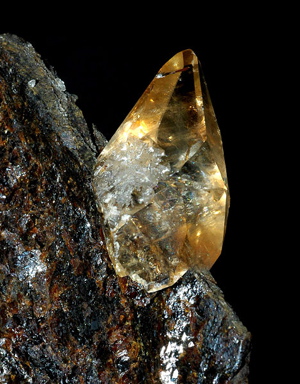
Introducing something different:
CALCITE
The name, calcite, has the same root as calcium and comes from the Greek "chalx" which means "lime" as in limestone.
Calcite is composed of:
Oxygen (three parts)
Calcium (one part)
Carbon (one part)
Appearance:
Whitish or gray colors.
Larger crystals also look like prisms of glass with closely spaced stripes.
Crystals glisten, they are transparent or milky.Hardness: 3
A knife will scratch calcite.How to recognize calcite in a rock:
Entire sedimentary and metamorphic rocks may be calcite. These rocks are often shades of gray and white. Most grains or crystals are tiny. . On their most-eroded edges they look sugary.
Calcite "fizzes" when acid is poured on it (carbon dioxide is produced in the chemical reaction).
Weathering:
Chemical weathering attacks calcite vigorously. The minerals dissolve and water carries the chemicals into the surface- and ground-water system.
Where you can find calcite in Salt Lake County:
- The gray layered rocks of much of the Oquirrh Mountains.
- The gray "S" ridge south of Mill Creek Canyon.
- The limestone quarries in Parley's Canyon.
- The gray/white marble of Alta.
- As ground-water deposits in caves.
- As clay-sized mud that precipitated out of Lake Bonneville.
- In many white metamorphic and gray sedimentary rocks of local cemeteries
Other:
Remind yourself how you will tell quartz and feldspar from calcite.
